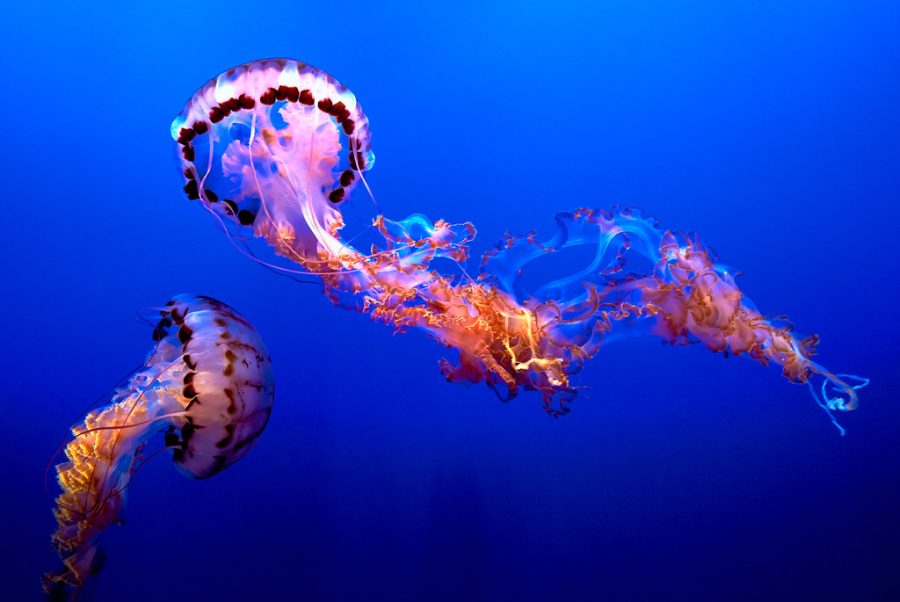Jellyfish are Incredibly Interesting, Here’s Why.
Source: Pedro Szekely
“Jellyfish” is licensed with CC BY-SA 2.0. To view a copy of this license, visit https://creativecommons.org/licenses/by-sa/2.0/
Jellyfish do not have brains. So how do they thrive in the ocean?
First, they take use of the ocean’s currents to move. They can live in many ocean environments due to their ability to be in warm and cold waters. They are invertebrates (do not contain a backbone) so they are not really fish! But animals need food to survive. So, they use their stingers to paralyze their prey and then feed through its mouth in its bowl-shaped head. In fact, they are not able to float without food! But what do they eat in order to glide effortlessly? Tiny fish, shrimp, and crabs are all included in their diet. Jellyfish are sea turtles favorite snack. They group together, although that makes them easier to be eaten. But what happened in the past? Their descendants include relatives from the Phylum Cnidaria living over 500 million years ago, possibly older than the dinosaurs! Ancestors have never only have a lifespan of anywhere from 3 to 6 months in the wild, but in captivity (being treated well in a zoo or something of the sort), they can last somewhere between 1 and 3 years. They are not considered dangerous to marine biologists because there are almost 1 billion in the wild!
Fun facts!
Jellyfish can also spit water to propel themselves throughout the water.
Jellyfish actually have 24 eye-like receptors, and only 2 of them can actually see in color!















